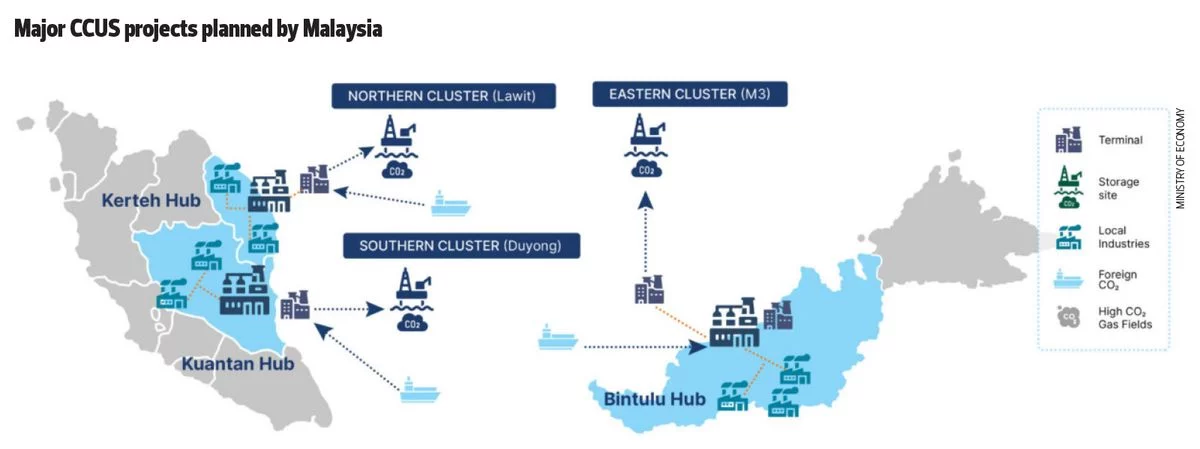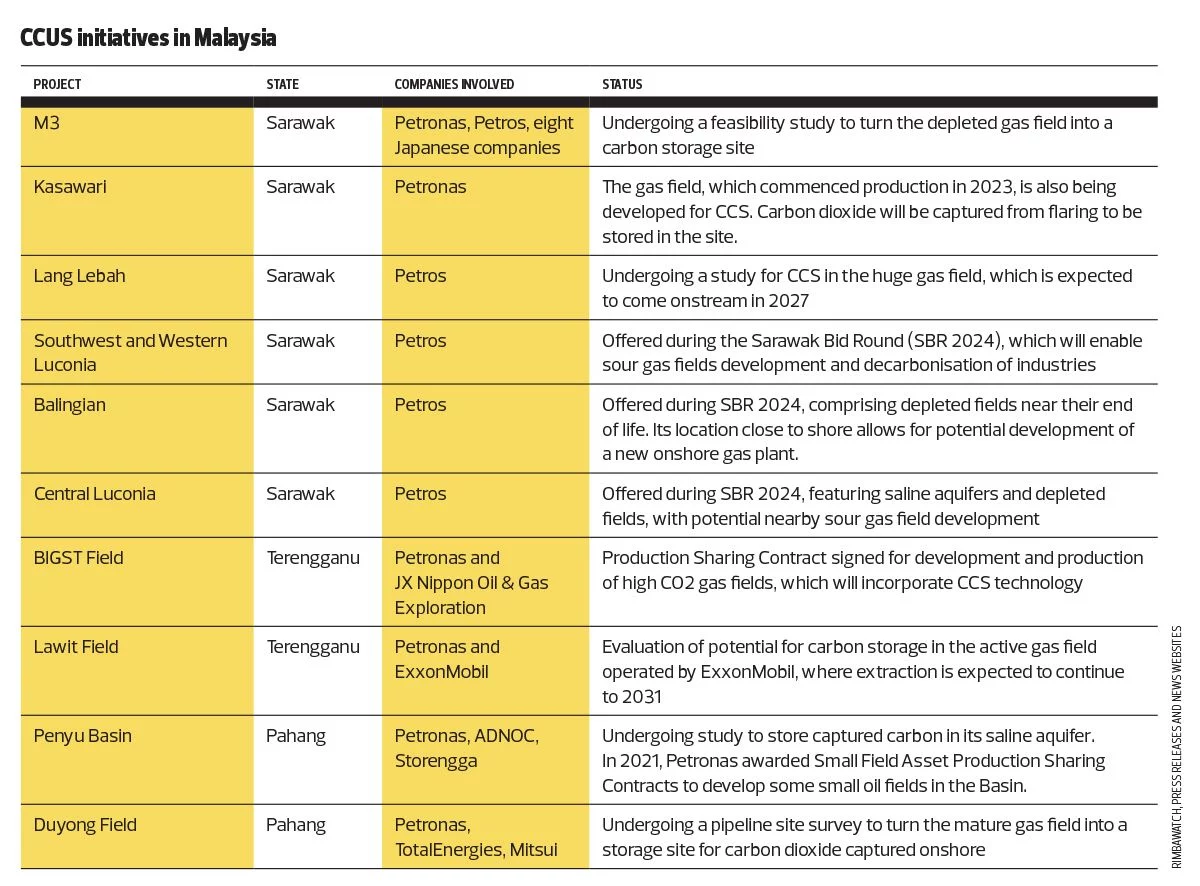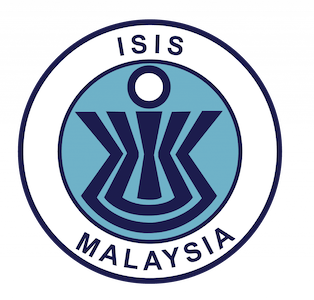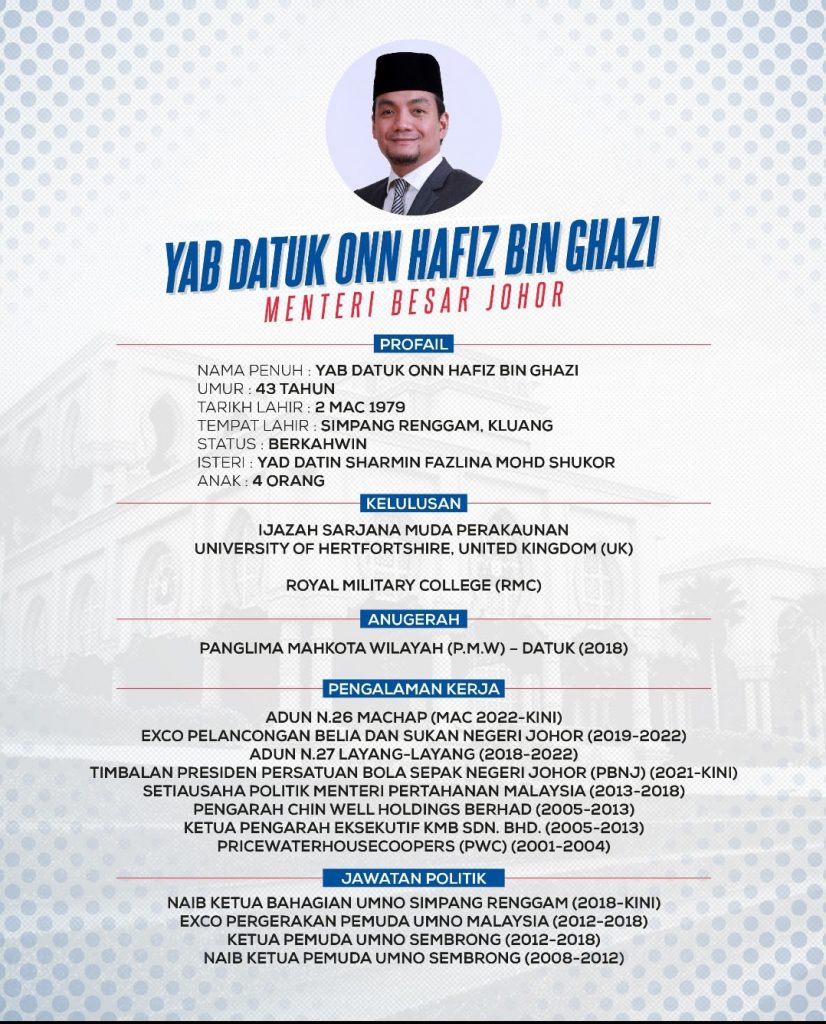Kieran Li Nair was quoted in The Edge Malaysia, 24 April 2025
This article first appeared in The Edge Malaysia Weekly on April 21, 2025 – April 27, 2025
Malaysia’s passing of the Carbon Capture, Utilisation and Storage (CCUS) Bill in March has left many questions unanswered about the bill’s place in contributing to the country’s climate goals. Yet, it is a step forward in implementing a flagship catalyst project under the National Energy Transition Roadmap (NETR), and meets the demand from countries that want to use CCUS to reduce emissions.
CCUS is a technology designed to capture carbon dioxide from point sources such as factories or the atmosphere. The captured gas is either stored underground permanently or utilised as a feedstock for industrial processes.
In Malaysia, as in many parts of the world, views about the role of CCUS in the low-carbon transition remain divided, and this was observed before and after the bill was passed in March.
It must be noted that the CCUS Bill covers only Peninsular Malaysia. In Sarawak, such projects are governed by its Land (Carbon Storage) Rules, 2022. The state launched the Sarawak Bid Round (SBR) 2024 last July, inviting proposals from multinationals to develop CCUS in the state at three locations.
CCUS is seen as an important tool to meet global energy and climate goals, especially for emissions that are technically difficult or prohibitively expensive to abate, according to the International Energy Agency (IEA).
The government envisions leveraging Malaysia’s geological advantages — particularly its oil and gas reservoirs — to position the country as a provider of carbon storage solutions. Companies in Malaysia with high emissions could also use this service, especially after carbon taxes — currently planned for the energy, steel and iron sectors by next year — come into play.
In fact, the NETR estimates that using carbon capture and storage (CCS) in the energy sector will deliver an additional 5% reduction in greenhouse gas (GHG) emissions, or 4.1 MtCO2eq per capita. The NETR highlights plans to develop three CCUS hubs by 2030 (15 Mtpa) and three more by 2050.
“CCUS supports both economic resilience and climate ambition. It reduces emissions from hard-to-abate sectors such as cement, power and refining, while opening the door for Malaysia to become a regional leader in carbon services,” says Siti Aishah Mohd Hatta, senior storage lead at the Global CCS Institute, an international think tank dedicated to accelerating the deployment of CCS.
“Malaysia is strategically positioning itself to offer CO2 (carbon dioxide) storage solutions to countries with limited storage potential, such as Japan, South Korea and Singapore. Climate change has no geological boundaries, but CO2 storage does. Malaysia stands to benefit by providing a much-needed service to others while decarbonising our industries.”
The Ministry of Economy has been eager to have the CCUS Bill passed since May last year and plans for it to be tabled in November. This plan has been met with criticism from some non-governmental organisations (NGOs), however, for its focus on the economic benefits of carbon storage over practical environmental action.
The main criticism is that CCUS promotes further extraction of fossil fuels, which should have no place if global warming is to be limited to 1.5°C by 2050, according to some projections. There are also concerns regarding the safety and environmental impacts of the technology.
“CCUS will benefit our climate targets only if the technology can be utilised locally and in an affordable manner, such as capturing our own carbon emissions in energy production and generating a net-negative in carbon emissions,” says Kieran Li Nair, senior researcher at the Institute of Strategic and International Studies (Isis) Malaysia.
The concern is that current CCUS technologies are not yet capable of achieving this goal affordably and efficiently.
“Retrofitting existing coal plants with CCS technology, aside from the costs incurred, ends up consuming more energy in the process,” says Kieran.
Environmental NGOs Sahabat Alam Malaysia (SAM) and Greenpeace note that CCUS advocates often claim that CCUS has a high carbon capture rate of around 90%. The NGOs say, however, that in reality, no CCUS plant has actually achieved this figure, with the global average capture rates being closer to 49%. This data was extracted from a study of 16 CCUS projects run by the Institute for Energy Economics and Financial Analysis.
Meanwhile, the Global CCS Institute has recorded a significant growth in CCS facility development since 2017. As at July 2024, the pipeline of CCS projects was at 628, which is a 60% year-on-year increase, according to the Global Status of CCS 2024 report. The report did not contain information about the rate of capture in the operational plants.
Siti Aishah points out that the concept of cross-border CO2 storage is not new, citing Norway’s Northern Lights project, one of the world’s first commercial-scale, cross-border CO2 transport and storage projects, as an example.
“It enables CO2 captured in European countries to be transported by ship and permanently stored offshore in a deep saline aquifer. It sets a global benchmark for how CO2 can be stored safely and transparently under strict regulatory oversight, while proving that CCS can be a viable business model,” she says.
“Northern Lights also demonstrates the importance of open-access infrastructure, regional cooperation and international standards, which Malaysia is adopting through the CCUS Bill and forthcoming regulations. It shows that with the proper legal framework and technical readiness, Malaysia can become a regional CCS leader, much like Norway has done for Europe.”
The first CCS project was by Equinor in Sleipner, Norway, in 1996. Excluding CCS projects used for enhanced oil recovery (EOR), there are 19 commercial dedicated geological CO2 storage projects operating globally, says Siti Aishah.
She acknowledges, however, that public and NGO concerns must be taken seriously, and she is confident that Malaysia is doing that by incorporating global best practices and operational experiences such as long-term monitoring, measuring and verification requirements; post-closure monitoring and liability provisions; third-party audits and community transparency; and seismic and geo-mechanical risk assessment before injection.
Currently, the text of the bill includes only requirements for the operator to monitor the storage complex, prepare a geological assessment and be responsible for the monitoring and any remediation activities at the site post-closure.
“The passage of the bill marks just the first step. The next phase of secondary legislation and detailed regulations is already in development and will provide greater clarity on implementation, permitting, fees, technical standards and monitoring requirements,” says Siti Aishah.
On the other hand, there are concerns regarding the governance of the new CCUS agency, with some parties noting a lack of transparency on how CCUS will be regulated.
“The CCUS agency should be placed under a separate regulator to prevent conflict of interest and ensure balanced consideration of environmental governance,” Kieran suggests.
The Ministry of Economy had not responded to queries from ESG at press time.

Benefiting the oil and gas industry?
A point of contention about CCUS is that it will encourage more extraction of fossil fuels, which defeats the purpose of using CCUS as a tool for decarbonisation.
Environmental watch group RimbaWatch published an analysis in March highlighting that nine out of the 10 identified CCUS initiatives in Malaysia were focused on unlocking previously inaccessible oil and gas reserves through enhanced oil recovery.
EOR is the process of injecting CO2 into depleted oil and gas reservoirs to stimulate more production. CCUS is also being used to develop sour gas reserves, which tend to have a high concentration of CO2.
Pieter Stek, senior lecturer at the Asia School of Business, says: “For the oil and gas industry, CCUS is one of the ways they can reduce their emissions … Injecting CO2 can also be a way to enhance gas or oil recovery. Basically, you inject it and it increases production.”
Petroleum Sarawak Bhd’s (Petros) announcement of its Sarawak Bid Round (2024) underscores this relationship. Alongside the state’s commitment to “driving CCUS innovation and contributing to the region’s net zero goals”, the state-owned company is “committed to rejuvenating onshore oil and gas potential in Sarawak, and advancing early commercialisation of onshore oil and gas discoveries”.
Some would argue that CCUS may be enabling more oil and gas extraction, but in a manner that is less carbon-intensive.
According to IEA, however, if the goal is to achieve net zero emissions by 2050, no new oil and gas fields should be approved after 2021. CCUS will still have a role in that journey in factories and plants, as well as sectors with few transition options, and through direct air capture.
As such, the main beneficiary of CCUS in Malaysia would seem to be the oil and gas industry, Stek observes.
In addition, the high cost of carbon storage is likely to deter local industries — especially in the absence of clear details on the proposed carbon tax — from pursuing CCS. Infrastructure for the capturing and transportation of carbon domestically will also need to be developed.
The NETR points out that commercially viable opportunities to use the captured CO2 are still lacking and deserve exploration, especially in sectors such as precast concrete and urea production.
In the shorter term, therefore, Malaysia will most likely be a storing ground for other countries’ CO2, says Stek, which is reflected in current agreements with foreign oil and gas companies (see table).
He stresses the importance of learning from other countries’ experience with CCUS and the need for independent agencies.
“Having an independent agency as a watchdog and reporting transparency on accidents is part of the Australian bill, so it’s something the Malaysian agency needs to make.”
At press time, Petros had not responded to ESG’s requests for comments.

A rushed bill and concerns on importing ‘waste’
Several NGOs say the implementation of the CCUS Bill was rushed, as it was passed before the Climate Change Bill and after only one public consultation session.
“In an ideal world, the bill would come out for consultation first, the public sees it and then public hearings are held. Afterwards, there would be amendments before heading to the legislative floor,” says Stek.
Kieran concurs, saying that further consultation should have been undertaken, especially given that the final bill differed significantly from what was presented during earlier consultations.
“While the Ministry of Economy is said to have conducted consultation with public interest on the bill, there are multiple accounts of its being an inadequate process. The outline presented was very preliminary and incomparable to the final bill presented during the readings,” says Kieran.
The frustration came to a head when Minister of Economy Rafizi Ramli stated that the ministry wanted to pass the bill by March 31 to secure long-term investment opportunities.
“If Malaysia cannot enforce this [bill] by March 31, we will be out — we cannot enter the bid,” Rafizi said when the bill was passed.
This narrative by the government has raised concerns that the push for CCUS is primarily an economic decision that is being masked as an environmental one. It has also elicited criticism from NGOs that Malaysia is importing waste and is not prepared for accidents that may occur, such as a leak.
The London Protocol was enacted in 1996 to prohibit disposal of waste at sea, and it was amended two decades ago to enable safe and secure sequestration of CO2 streams in geologic formations under the seabed.
According to the Protocol, CO2 streams from capture processes may be considered for dumping only if the disposal is made into a sub-seabed geological formation and consists overwhelmingly of CO2, and no wastes or other matter are added.
“Two countries we’re dealing with — Japan and South Korea — are signatories to this convention, and the NETR also makes references to it in designing transboundary CCUS provisions. Thus, CO2 storage should be viewed in this lens, as a potential source of pollution that must be subject to stringent regulation,” says Kieran.
The risk of pollution to water sources from leakage of CCUS sites to adjacent geological formations is a concern often brought up by NGOs.
SAM, for instance, issued a statement highlighting potential harmful geochemical reactions and mobilisation of polluting elements from these sites. The NGO finds that the bill does not contain sufficient safeguards for environmental protection and public health at the moment.
Proper and effective regulation, monitoring and reporting would be needed to prevent such incidents from occurring. Some of these points are mentioned in the CCUS Bill and in Sarawak’s Land (Carbon Storage) Rules, 2022.
Under the CCUS Bill, the CCUS agency must report to the minister on any matters concerning leakage or significant irregularity. If there are leakages or irregularities, the operator must carry out corrective measures and remediation measures.
The CO2 stream shall consist overwhelmingly of the gas, and no waste can be added. The concentration must also be below levels that would adversely affect the integrity of the storage site or pose significant risks to human health or the environment.
Sarawak’s Land (Carbon Storage) Rules, 2022, goes further and says the authority may reject the application from a CCUS operator if it decides that the licensed area is “not suitable, safe or in the public interest”. The storage permit can be revoked if “any scientific finding or technological development makes the continued use of the storage site unsafe, or would adversely affect the environment in and around the site”.
An Environmental Impact Assessment (EIA) report, approved by the state’s Natural Resources and Environmental Board, is needed to obtain a storage permit. Applicants must also provide audited financial statements for the last two financial years to demonstrate its ability to manage the project.
It is not clear whether these reports and, in Sarawak’s case, EIAs will be made public. This is another point of contention. SAM has called for clarity on which CCS projects require EIAs and demanded that the ruling should come under the Second Schedule, which makes it mandatory for public display and public comment.
This article first appeared in The Edge Malaysia, 24 April 2025





